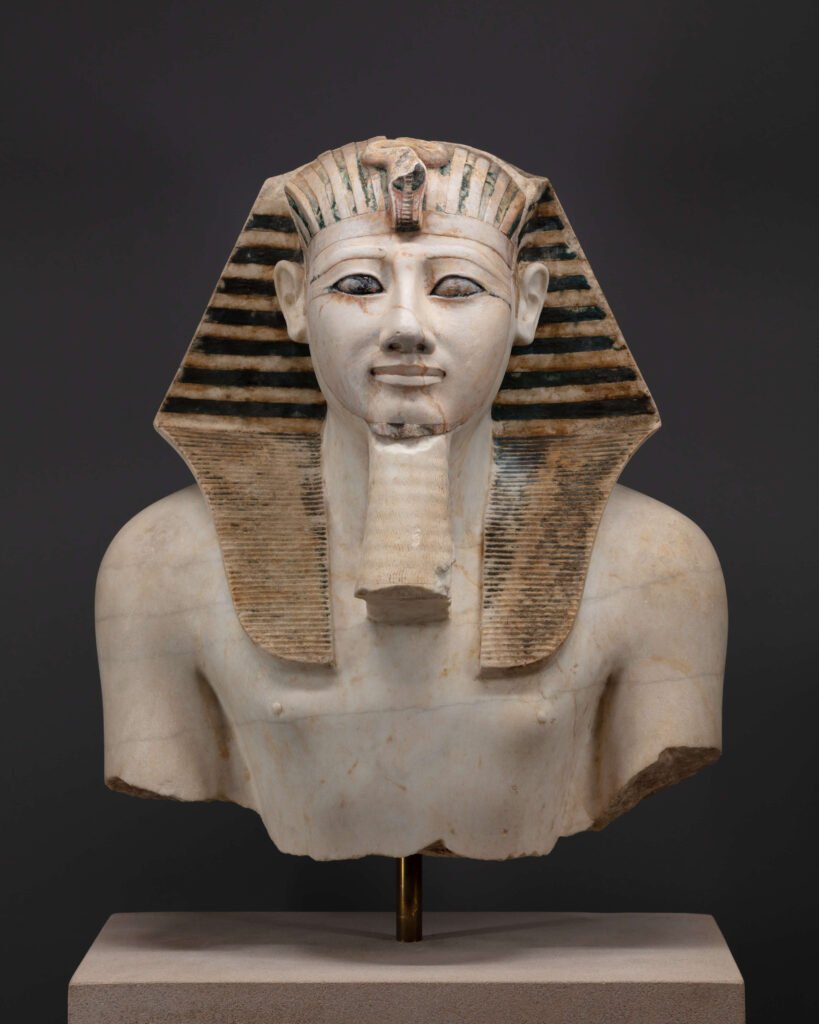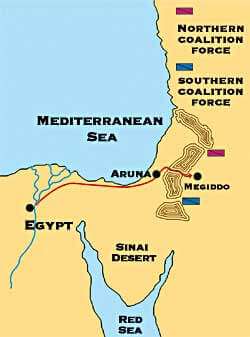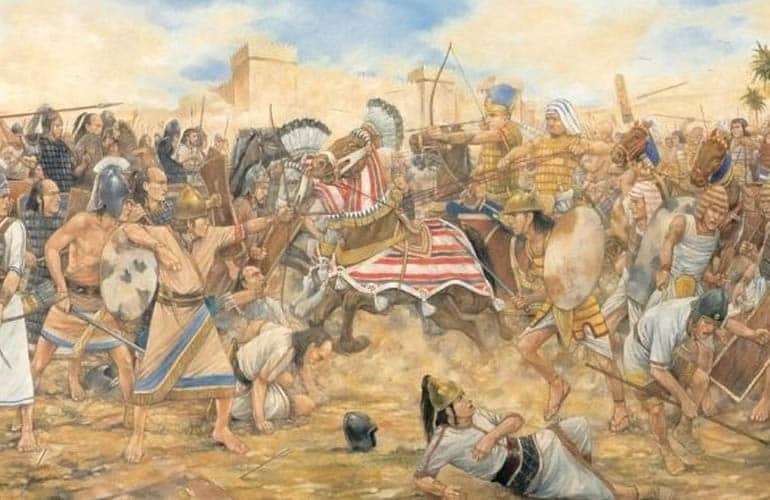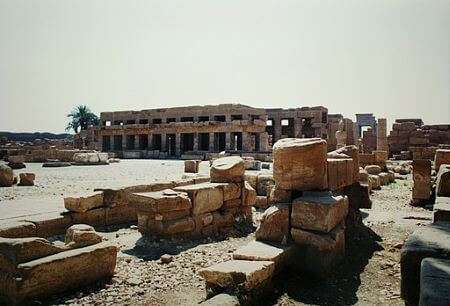Thutmose III stands as a colossus in the annals of Egyptian history, a pharaoh whose reign shaped the very fabric of ancient Egypt’s golden age. His strategic military acumen and monumental architectural undertakings have etched his legacy into stone and myth alike. This article peels back the sands of time to reveal a ruler of unparalleled ambition and prowess. Through a tapestry of exclusive research and insightful analysis, we will navigate the life and times of this storied hero, unearthing fresh perspectives on his storied campaigns, his transformative cultural influences, and the enduring myths that surround him. By delving into accounts etched on temple walls and corroborated by archaeological findings, we offer a comprehensive exploration that not only chronicles Thutmose III’s monumental achievements but also illuminates the humanity behind the deity-like facade.
| Origin | Ancient Egyptian Civilization |
|---|---|
| Classification | Pharaoh |
| Family Members | Thutmose II (Father), Iset (Mother), Hatshepsut (Stepmother/Aunt), Amenhotep II (Son) |
| Region | Egypt |
| Associated with | Military Campaigns, Monument Building, Era of Empire Expansion |
1. The Rise of Thutmose III
Early Life and Path to Pharaoh
Thutmose III’s story begins not with a battle cry, but with the subtle intrigue of royal lineage. Born to Pharaoh Thutmose II and a lesser royal wife, his path to the throne was not assured. It was only through the early death of his father and the subsequent regency of his stepmother, Hatshepsut, that Thutmose III’s destiny began to crystallize. The exact nature of his upbringing remains shrouded in mystery, but inscriptions hint at a youth spent honing the arts of war and governance, preparing for the day he would rule Egypt as its sole sovereign.
Steering Through Political Turbulence
The political landscape during Thutmose III’s ascent was as complex as the winding Nile. Hatshepsut’s co-regency presented a delicate balance of power, where Thutmose III’s military exploits grew his popularity, juxtaposed against Hatshepsut’s formidable administrative rule. This period outwardly displayed peace, yet it concealed the internal preparations for Egypt’s expansion that Thutmose III initiated once he took the reins of power.

2. Military Genius and Campaigns
Architect of War
Thutmose III’s well-deserved reputation as a military mastermind testifies to his strategic genius across time. Swift, decisive action and innovative tactics marked his campaigns. From the use of intelligence networks to the strategic positioning of troops, Thutmose III demonstrated an unparalleled understanding of the art of war. His incorporation of chariots, not just as mobile platforms but as integral components of his army’s shock force, revolutionized Egyptian military doctrine.

The Battle of Megiddo: A Tactical Exemplar
The Battle of Megiddo stands as a centerpiece in Thutmose III’s military legacy, often heralded as one of the greatest tactical achievements of the ancient world. Choosing to attack via a narrow pass, Thutmose III surprised his enemies with both the audacity and speed of his assault. This battle not only solidified his reputation but also ensured Egypt’s dominance over Canaan. The detailed records of this battle, meticulously documented on the walls of the Karnak temple, offer a blow-by-blow account of this military triumph.

Redrawing the Map
Thutmose III’s campaigns extended Egypt’s boundaries further than any pharaoh before or after him. His seventeen recorded campaigns into Asia and Nubia reshaped the geopolitical landscape of the Near East. Under his command, Egyptian influence reached its zenith, with tributes flowing into Thebes from as far as the Euphrates, securing Egypt’s prosperity for generations.
Preserved in Stone
Contemporary records and maps unearthed from temple archives and the annals of Thutmose III’s great annalist, Tjaneni, provide an invaluable window into this era. These artifacts, some still bearing the original color and hieroglyphs, offer not just a historical account, but a palpable connection to the events that unfolded under Thutmose III’s rule. They allow us to trace the footsteps of the pharaoh’s armies as they marched across the known world, bringing glory to the empire.
3. Architectural and Cultural Contributions
Monuments to Eternity
Thutmose III’s reign heralded an era of prolific construction that transformed the Egyptian landscape. His architectural projects were not mere structures; they were statements of power, piety, and permanence. The pharaoh commissioned a plethora of temples, obelisks, and monuments, each chronicling his achievements and reinforcing his divine status. The most significant of these was the expansion of the Temple of Amun at Karnak, which stands as a testament to his dedication to the gods and his country.
Karnak: The Apex of Religious Architecture
Under Thutmose III, Karnak became the axis mundi of the New Kingdom. Colossal statues adorned the temple complex, towering obelisks rose into the sky, and sprawling precincts stretched across the land, all attesting to the pharaoh’s grandeur. His contributions to Karnak encapsulated his divine mandate and showcased the zenith of Egyptian religious architecture, setting a precedent for his successors to follow.

Patron of the Arts and Guardian of Culture
Beyond stone and mortar, Thutmose III’s impact on the arts and culture of his time was profound. He patronized the arts, commissioning works that showcased the sophistication and skill of Egyptian artisans. His reign was characterized by a flourishing of cultural expression, with innovations in sculpture, painting, and literature. Thutmose III understood that culture was a cornerstone of a civilization’s identity and fostered an environment where it could thrive.
A Divine Legacy in Religion
Thutmose III’s religious contributions were pivotal in shaping Egyptian theology. His campaigns brought a multitude of foreign gods into the Egyptian pantheon, reflecting an era of unparalleled cosmopolitanism. The fusion of these deities into local worship demonstrated his inclusive approach to governance and religion, further solidifying his image as a divine ruler in the eyes of his people.
The legacy of Thutmose III’s architectural and cultural endeavors continues to awe and inspire. Peeling back the layers of his contributions reveals a leader who not only conquered but also created, a pharaoh whose visions of grandeur matched the enduring impact he had on the civilization he ruled.
4. Thutmose III in Myth and Religion
Divine Descent: Thutmose III and the Gods
Thutmose III’s divinity was not just a matter of royal propaganda but a deeply entrenched element of Egyptian mythology. Claiming direct descent from the god Amun, his divine lineage was more than a political tool; it was a widely held belief that legitimized his rule and military conquests. The myths surrounding his birth and ascension portray a pharaoh preordained for greatness, with the gods themselves whispering of his destiny in the ears of his subjects.
A Pharaoh Among Gods
In the pantheon of his time, Thutmose III occupied a unique position. Temples across Egypt resonated with his name, often placing him alongside deities in religious texts and rituals. The gods’ will manifested through Thutmose III’s military victories and expansions, and he was chosen as the executor of their divine plans. This intertwining of the pharaoh with the gods not only reinforced his authority but also reflected the symbiotic relationship between religion and rulership in ancient Egypt.
Hymns to the Hero: Thutmose III’s Divine Praise
The hymns and prayers dedicated to Thutmose III are among the most telling artifacts of his religious significance. Inscriptions on temples and tombs intimately reveal the reverence for Thutmose III, speaking directly to his might and wisdom. They invoke his protection and celebrate his accomplishments, actively portraying a leader whom people deified during his lifetime. Analyzing these texts shows that observers saw every action of the ruler as a direct reflection of divine favor and intent.
The myths and religious practices of the time were not mere superstition; they were the underpinnings of Thutmose III’s enduring legacy, a legacy that cemented his status as a demigod in the eyes of his people and the annals of history.
5. Thutmose III’s Legacy
The Afterglow of a Golden Age
The aftermath of Thutmose III’s reign left an indelible mark on Egypt and its dominions. His successors inherited an empire at its territorial apogee, with a well-established administrative system and a military that was the envy of the ancient world. The prosperity and stability he secured allowed art, culture, and religion to flourish in subsequent generations. His reign is often seen as the benchmark against which later pharaohs were measured, a golden age that became the yardstick of Egyptian imperial success.
Unearthing the Pharaoh
Modern-day Egyptology continues to uncover the depths of Thutmose III’s influence through the ongoing study of his tomb in the Valley of the Kings and the treasures it once housed. Each artifact, from the grandiose to the mundane, provides a richer picture of the pharaoh’s daily life and the workings of his court. The treasures, although plundered in antiquity, are evidenced by detailed inventories and offer insight into the sophistication and wealth of his era.

Thutmose III in the Modern Imagination
Contemporary media and literature have found a muse in Thutmose III, often portraying him as a character of mythic proportions. In historical novels, films, and documentaries, he is depicted as the quintessential pharaoh—a warrior, a statesman, and a god-king. These portrayals, while varied in accuracy, speak to the fascination Thutmose III continues to inspire, a testament to his profound impact on the collective consciousness, both as a historical figure and as an icon of power and achievement.
Thutmose III’s story is one that transcends time, with each chapter of his life offering a lesson in leadership, vision, and the enduring power of legacy. His reign not only shaped the history of ancient Egypt but also continues to captivate and educate those who walk in the shadow of his monuments and the legacy of his rule.
6. Conclusion
In the tapestry of history, Thutmose III emerges as a figure of unparalleled significance, his life weaving a narrative of conquest, innovation, and divinity that still resonates today. His military genius, architectural grandeur, and cultural patronage laid the foundations for an Egyptian empire that stood robust for centuries. As we gaze upon the remnants of his temples and recount the tales of his valor, we are reminded of the lasting influence one visionary leader can have on the course of history. Thutmose III’s legacy, entwined with the very identity of ancient Egypt, beckons us to reflect on our own contributions and the footprints we leave for posterity. His epoch, a distant mirror, challenges us to grasp the threads of our past to fashion a future that honors such heroic legacies.
